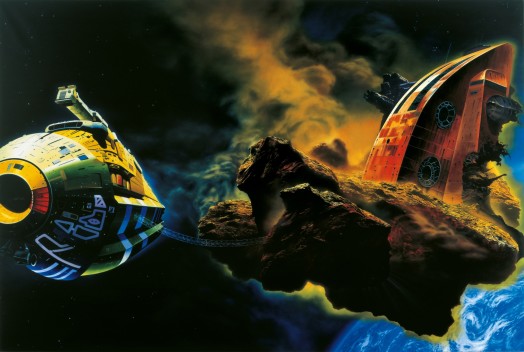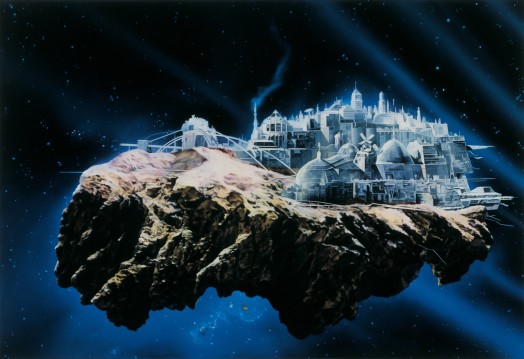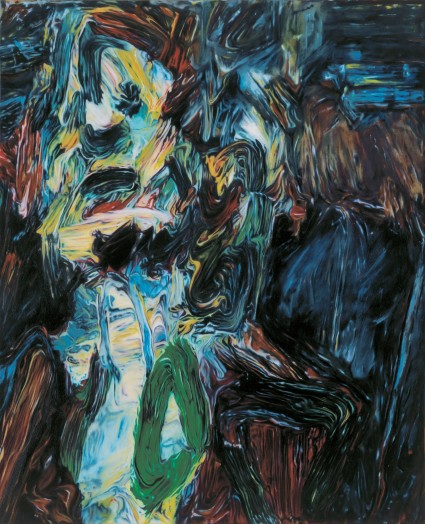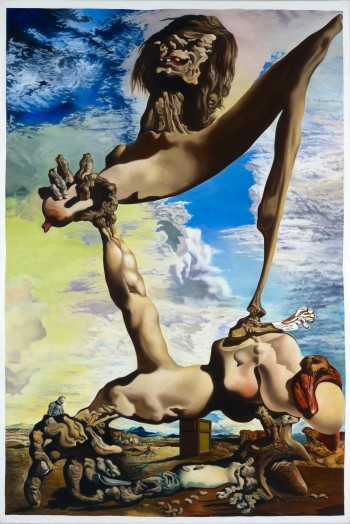Remote Control (Fernbedienung) - Does television inform the way art is made?: Grazer Kunstverein, Graz, Austria
In the first period of reflection on the new information and communication medium, ie about ten years after the nationwide coverage of households, at least in the Western world, at the end of the 60s, that generation was born, for the television did not constitute new achievement more but became part of the everyday world. From the so-called progressive attitude of the postwar period, the underpinnings of capitalist modes of thought was both in the real world presented as well as in the electronic world of television. Utopias of a clean world gave rise modular grid cities, as well as antiseptic structure in media space. Television broadcasting was marked by the smooth transition between public and private spheres, the Occupy further spaces of the democratization of information, and the exchange of homogeneous and therefore morally and politically correct values. In the construction of the new realities social problems were virtually ignored in order to maintain the idea of a clean world. Settlements and television programs have been programmed in accordance with uniform principles as possible. The increasing importance of private space since the beginning of the 50s, which manifested itself mainly in the aestheticism of modern domesticity could combine traditional values with utopian Gesellschafstmodellen. Those arguments, which were praised in the initial euphoria of the new medium as engines of a modern society, set against a critic rolled over by the technological development reality. In disappearance of boundaries between öffentiicherund private world you could see a loss of individual freedom, the democratic handling of information was feared the dumbing down of the audience and their seduction by advertising. With the development of television is changing not only the presented content, but also the critical positions. In the expression of different attitudes manifested a confrontation with the medium to which always can perzepieren new ways to use, is characterized by a very open structure, although their basic pattern relies on traditional forms of representation.Since formal analyzes of television were still not employed to the extent such. As the film, studies on this subject are often given little importance.Especially in the closer examination of the forms of representation, however, opens up a field that is able to show the development of television in the social context. The television worked from the beginning with the traditional forms of representation of the cinema, with its continuous narrative in screen and interface, the radio with its direct response and especially the theater with the presence of the viewer.
Artists exhibited:
Alex Bag, Glenn Brown, Mat Collishaw, Vadim Fishkin, Oliver Hangl, Astrid Hermann, Bernard Joisten, Alix Stewart Lambert, Johannes Schweiger, Georgina Starr, Elise Tak.
Artworks
-
 Glenn BrownExercise one (for Ian Curtis) after Chris Foss, 1995Oil on canvas mounted on board50 x 70 cm
Glenn BrownExercise one (for Ian Curtis) after Chris Foss, 1995Oil on canvas mounted on board50 x 70 cm -
 Glenn BrownOrnamental Despair (Painting for Ian Curtis) copied from 'Asteriod Hunters' 1971 by Chris Foss, 1994Oil on canvas200 x 300 cm
Glenn BrownOrnamental Despair (Painting for Ian Curtis) copied from 'Asteriod Hunters' 1971 by Chris Foss, 1994Oil on canvas200 x 300 cm -
 Glenn BrownUnknown Pleasures (Painting for Ian Curtis) after Chris Foss, 1994Oil on canvas46.5 x 69 cm
Glenn BrownUnknown Pleasures (Painting for Ian Curtis) after Chris Foss, 1994Oil on canvas46.5 x 69 cm -
 Glenn BrownNight of the Living Dead 1992/93Oil on canvas63.5 x 50.8 cm
Glenn BrownNight of the Living Dead 1992/93Oil on canvas63.5 x 50.8 cm

